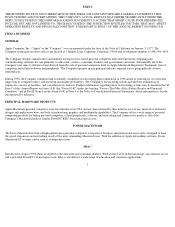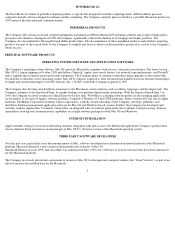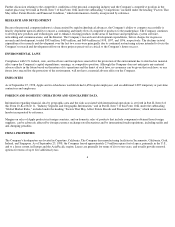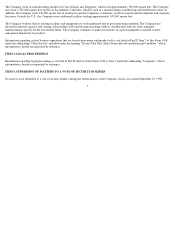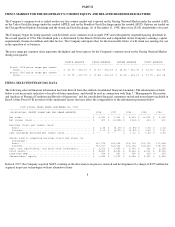Apple 1998 Annual Report Download - page 13
Download and view the complete annual report
Please find page 13 of the 1998 Apple annual report below. You can navigate through the pages in the report by either clicking on the pages listed below, or by using the keyword search tool below to find specific information within the annual report.key components on terms acceptable to the Company; the Company's ability to supply products in certain categories; the Company's ability to
supply products free of latent defects or other faults; the Company's ability to make timely delivery to the marketplace of technological
innovations, including its ability to continue to make timely delivery of planned enhancements to the current Mac OS and to make timely
delivery of a new and substantially backward-compatible operating system; the Company's ability to successfully integrate technologies
obtained from NeXT with those at Apple; the Company's ability to maintain the benefits derived from its restructuring actions, including
maintaining the reduced level of expenditures; the Company's ability to attract, motivate and retain employees; and the availability of third-
party software for particular applications. Potential risks and uncertainties that could affect the Company's future operating results and financial
condition are discussed throughout this Item 7, including the discussion under the heading "Factors That May Affect Results and Financial
Condition."
NET SALES
Net sales decreased $1.1 billion, or 16%, to $5,941 million in 1998, compared to a 28% decline in 1997. The decline during 1998 in net sales is
attributable to several factors. The Company experienced a $454 million decrease in net sales of peripheral products during 1998 compared to
1997 principally due to the discontinuance by the Company of certain imaging and display products. The average revenue per Macintosh
system, a function of total net sales generated by hardware shipments and total Macintosh CPU unit sales, fell 11% to $2,095 during 1998 as
compared to 1997, reflecting the effect of aggressive pricing of the Company's Power Macintosh G3 systems introduced in the first quarter of
fiscal 1998, the decline in net sales from the phase out of certain peripheral products, the overall industry trend towards lower-priced products,
and the Company's reentry during the fourth quarter of 1998 into the lower-priced consumer market. Lastly, overall Macintosh CPU units sales
for 1998 declined approximately 4% from 1997. As discussed below, international net sales were particularly affected by these factors and by
the economic conditions in Asia. The 28% decline in net sales in 1997 as compared to 1996 was due to declines in Macintosh CPU and
peripheral unit sales of 27% and 33%, respectively, primarily as a result of a decline in worldwide demand for most of the Company's product
families.
Net sales increased sequentially during the fourth quarter of 1998 compared with the third quarter of 1998 by $154 million or 11%. Macintosh
unit sales also increased sequentially during the fourth quarter, rising 190,000 units or 30% to a total of 834,000 units. The sequential increases
in both net sales and unit sales experienced during the fourth quarter of 1998 are primarily attributable to introduction by the Company of the
iMac, a moderately priced Macintosh system designed for the education and consumer markets. Sales of iMac accounted for 33% or 278,000 of
the total Macintosh units shipped in the fourth quarter. While the Company did experience year-over-year growth in Macintosh unit shipments
in the fourth quarter of 1998 as compared to the same period in 1997 of 182,000 units or 28%, net sales for the same period declined $58
million or 4%, reflecting the overall decline in the average revenue per Macintosh system discussed above. During the fourth quarter of 1998,
the Company's product mix continued to shift towards products incorporating the Power Macintosh G3 microprocessor. Sales of G3 powered
Macintosh systems accounted for approximately 98% of Macintosh units shipped during the fourth quarter of 1998 as compared to 84% during
the prior quarter. Net sales of imaging and display products decreased by $10 million to $117 million in the fourth quarter of 1998 compared
with the prior quarter reflecting the continuing phase-out of most imaging and many display products.
International sales represented 45% of net sales in 1998 compared with 50% of net sales in 1997 and 52% of net sales in 1996. International net
sales declined $920 million or 26% in 1998 compared to 1997, while over the same time frame, domestic net sales declined by 6% or $220
million. The decline in international net sales is primarily due to decreased revenue in the European and Japanese markets as a result of
significant decreases in Macintosh unit sales and the average revenue per Macintosh system. Overall sales in the European and Japanese
markets were negatively affected during the fiscal year by the lack of available consumer oriented products at various times during 1998. Sales
in Asia, including Japan,
11


